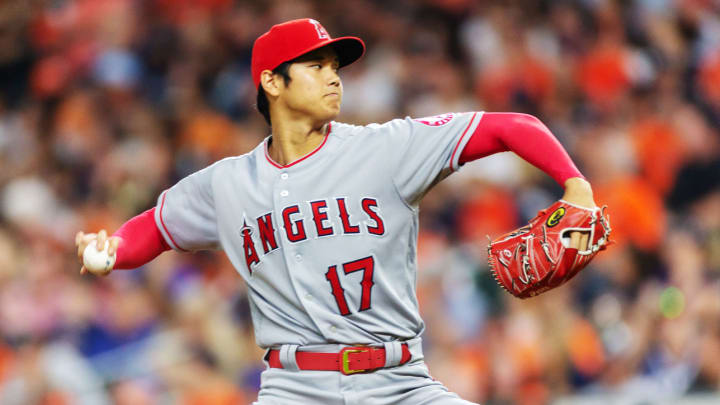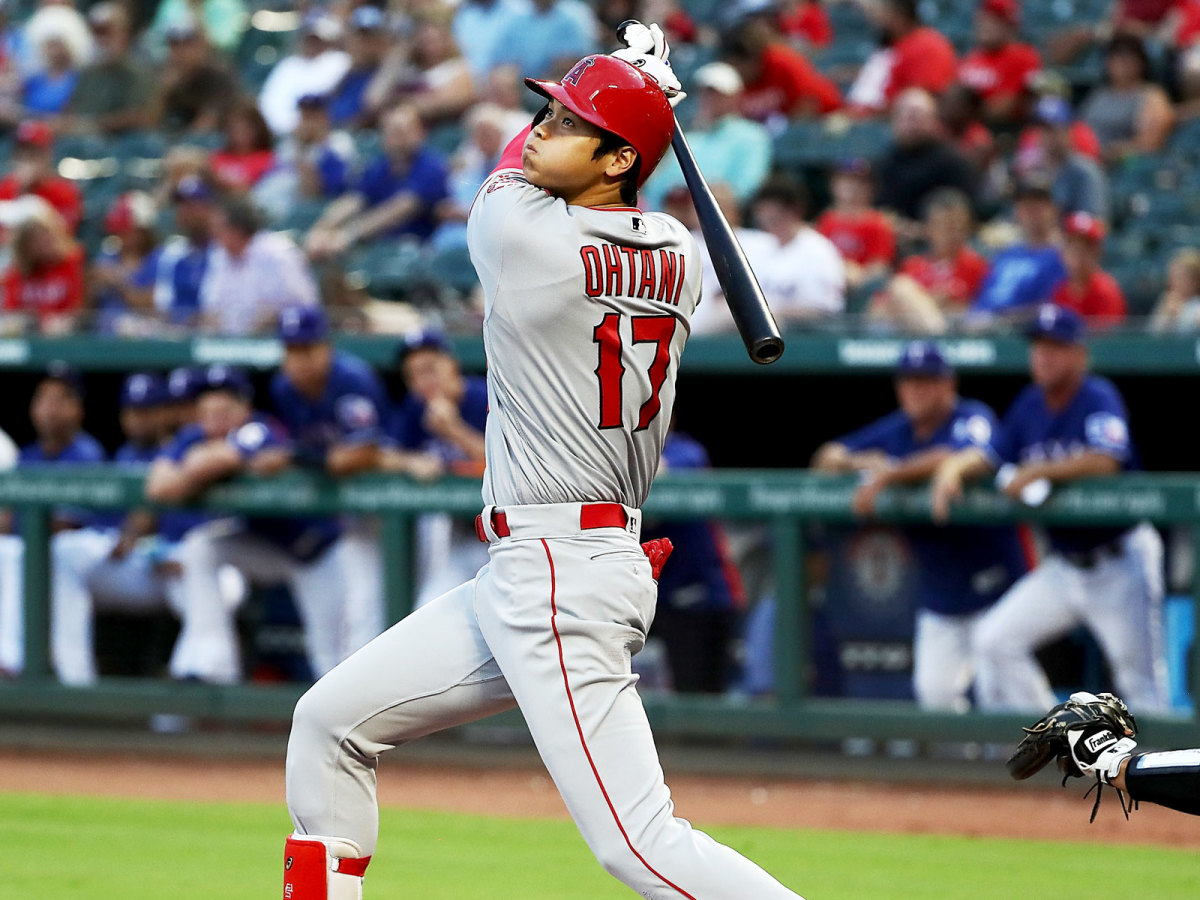Whatever the Future Holds for Shohei Ohtani, He Should Win AL Rookie of the Year

Shohei Ohtani, the pitcher, may be in need of season-ending surgery with a lengthy recovery period. Shohei Ohtani, the hitter, remains one of baseball’s most exciting threats at the plate. Exactly what these facts will mean for Ohtani, the player, isn’t yet clear.
On Wednesday, news broke that the recommended course of action for his ligament damage was Tommy John. It had been obvious that something was wrong during Ohtani’s most recent start, his first in nearly three months. On Sunday Night Baseball, his velocity had wavered and then crashed; he was pulled in the third inning. A few days later, the update confirmed that the something was, in fact, the worst-case scenario—a new injury to his ulnar collateral ligament. Yet just a few hours later, he was in the lineup as a designated hitter, 4-for-4 with two home runs. It underscored what should have already been evident: Ohtani’s path to surgery and beyond will not be typical, because nothing about him is typical.
Ohtani is set to sit down with Los Angeles Angels general manager Billy Eppler on Monday, and that meeting should reportedly provide some clarity on what direction he takes. He could end his season now and undergo surgery immediately, with plans to be in the lineup as a hitter for much of next season. He could wait to make a decision until after the season has ended. He could have surgery, but not serve as a regular hitter during his recovery period. He could rule against having surgery at all. Physically, Ohtani should be able to work just fine at the plate post-surgery, as Jeff Passan of Yahoo Sports explored here.
As a right-handed pitcher and left-handed hitter, he could theoretically start taking batting practice about three months after surgery, doctors say—which would make a spot in the lineup entirely possible for most, if not all, of next season, assuming that the procedure is scheduled for early in the offseason. The Angels and Ohtani will navigate that decision together, though, and one can imagine a reasonable scenario to fit each of the options above. Ohtani could be off the mound for more than a year, or he could be off everything for more than a year, or, most likely, something somewhere in between. The fact that the question is even on the table is just another reminder of how groundbreaking his talent is.
Ohtani’s + elbow trouble kept him off the mound for roughly half the season, and his pitching schedule has meant that he gets less time in the lineup than a typical everyday hitter would. Yet he’s still rightfully a top pick for AL Rookie of the Year. His case does not rely on historical context (baseball hasn’t seen anything like this in decades!) or on lofty comparisons (Babe Ruth!) or on aesthetics (just watch him!) His appeal taps into each of those categories, of course, but there’s an argument here that’s simpler than any of that.

Just look at the numbers. There are 16 rookies who have been league-average hitters this year, if the minimum number of plate appearances is set at 200. Ohtani is one of them, and he’s been further above average than all the rest. He leads all rookies in slugging percentage, and AL rookies in OBP. His 155 OPS+ tops everyone else, edging out phenoms Ronald Acuña, Jr. (147) and Juan Soto (142). The American League’s closest competition is Gleyber Torres—who isn’t so close at all, despite his excellent season, with a 125 OPS+. Since 2003, there have been just eight rookies to post a higher number here than Ohtani. (One of them? Fellow Angel Mike Trout, with a 168 OPS+, who was unanimously voted Rookie of the Year in 2012.)
Ohtani has been one of the best rookie hitters in recent memory, and the numbers say that he’s undeniably been the best this year in the American League. If you were to evaluate him just at the plate—judging him as a designated hitter, taking the limited playing time into account—he would still have a remarkably solid case for Rookie of the Year. Think about that, and then throw in the fact that he’s also been a legitimate top-of-the-rotation arm, with a 128 ERA+ and the highest strikeout rate of any rookie starting pitcher in the American League.
It’s a brief sample, 51 2/3 innings across 10 starts, but it’s enough to prove a point. Ohtani was the league’s best rookie hitter, and one of its best rookie pitchers. He’s a formidable talent when considered in either category, and a singular talent when considered in both. If he’s just as a hitter for the next season, well, he could still be among the game’s top tier. But that vision of the future feels like a loss, even if just a temporary one. That might sound like a ridiculous statement to make about an outlook for a player as one of the game’s elite young hitters, and yet it seems warranted—a testament to the strength of what Ohtani did this season, and what he’ll hopefully get the chance to do again.
In an era of increasing specialization—where value is carefully quantified and then maximized by assigning players to the most highly specific roles possible—a player like this shouldn’t be able to exist. And yet, somehow, he does. He cracks open the mold that baseball has been pointing toward for decades now, and he builds one in its place that’s utterly the opposite. This would be the case if Ohtani were a middle-of-the-rotation starter on the mound and a league-average designated hitter at the plate. Simply building a presence in both roles is enough to shift the paradigm here. But Ohtani hasn’t just been a presence, he’s been a phenom, as both an ace and slugger. It wasn’t that Ohtani suggested a different model of success in his few short months in the major leagues, but that he seemingly perfected it.
Even as just a partially operative version of himself, Ohtani is a force; at his healthy best, he’s a small miracle. If he has surgery early in the offseason, he could likely be expected to return in that full two-way capacity for 2020. As for 2019? Well, a pitcher rehabbing from surgery by serving as a full-time designated hitter isn’t any more drastic a paradigm shift than anything he’s done yet.
